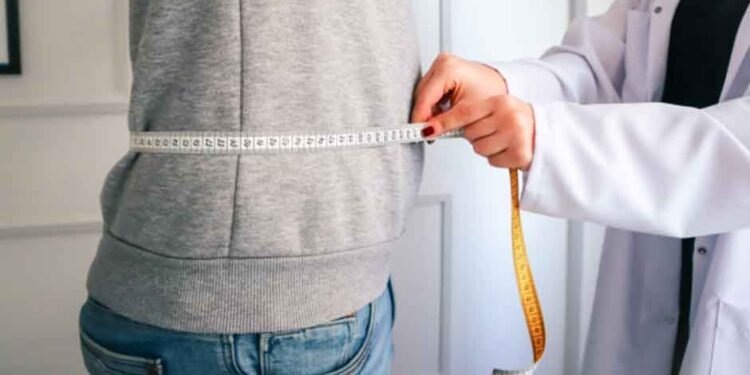You’ve been working hard on your weight loss journey. The scale is moving in the right direction, your clothes fit differently, and you’re feeling healthier. But then you look in the mirror and notice something unexpected. Your body doesn’t look quite the way you imagined it would at this weight. Sound familiar?
Here’s the thing: weight transformation is about so much more than just watching numbers drop. Your body goes through a complex series of changes, and not all of them are what you’d expect. Some are amazing, some are frustrating, and some are just plain confusing. This guide walks you through what’s really happening inside and outside your body during transformation, so you can set realistic expectations and navigate this journey with confidence.
Understanding What Happens Beneath Your Skin
Fat Loss vs Weight Loss
Let’s clear something up right away. When you lose weight, you’re not just losing fat. You’re also losing water, and sometimes even muscle if you’re not careful. Your fat cells don’t actually disappear when you lose weight. They just shrink. Think of them like deflated balloons rather than balloons that popped and vanished.
This matters because those shrunken fat cells can fill back up if your habits change. It’s why maintaining weight loss requires ongoing effort. Your body also goes through metabolic changes during this process. Your metabolism might slow down slightly as you lose weight, which is completely normal but something to be aware of.
The Role of Organs and Internal Systems
Your internal organs and systems don’t just sit idle while you transform your body. They’re actively adapting too. As you lose weight, particularly if you’ve reversed conditions like metabolic syndrome, your organs start functioning more efficiently. Your heart doesn’t have to work as hard. Your liver processes nutrients better. Your digestive system operates more smoothly.
However, rapid or extreme weight loss can sometimes create complications that need medical attention. Issues with the liver, gallbladder problems, or significant digestive system concerns may require specialized care from a hepatobiliary surgeon singapore medical professionals. This is especially important if you’re experiencing pain, unusual symptoms, or have undergone bariatric surgery.
Your hormones also shift dramatically during weight transformation. Hormones that control hunger, fullness, and energy regulation like leptin and ghrelin change their patterns. This is why you might feel hungrier than expected even after eating, or why your energy levels fluctuate during different phases of your journey.
Visible Skin and Texture Changes You Might Experience
Why Your Skin Responds Differently
Here’s where things get real. Your skin is your body’s largest organ, and it has to adapt to your changing shape. When you lose fat, the skin that was stretched over that fat doesn’t automatically shrink back like a rubber band. It depends on several factors including your age, genetics, how quickly you lost weight, and how much weight you lost.
Collagen and elastin are the proteins that give your skin its bounce-back ability. Unfortunately, as we age, we produce less of both. If you’re losing weight in your 40s or 50s, your skin won’t respond the same way it would have in your 20s. This isn’t a failure on your part. It’s just biology.
The adaptation process takes time too. Your skin needs anywhere from one to two years to naturally tighten after significant weight loss. Some areas respond better than others. Your face might tighten up relatively quickly, while your abdomen or upper arms might take longer.
The Paradox of Improved Health but Changed Appearance
This is the frustrating part that nobody warns you about. You’re healthier than ever, but certain areas might actually look worse temporarily. You might notice more dimpling, more texture irregularities, or areas that seem saggier than before.
Want to know something that catches people off guard? You can Learn about why you get more cellulite when you lose weight. It seems counterintuitive, right? You’re losing fat, so shouldn’t cellulite decrease? Here’s what actually happens: cellulite is caused by fat cells pushing through connective tissue bands under your skin. When you lose fat, your skin can become thinner, making those bands more visible. The fat cells shrink but the structural issue becomes more apparent. Plus, if you lose muscle mass along with fat, there’s less underlying support, which can make cellulite more noticeable.
Loose skin is another common concern. The amount varies dramatically from person to person. Someone who loses 30 pounds might have minimal loose skin, while another person losing the same amount might have more, depending on factors like where they carry weight, their age, and how quickly they lost it.
The important thing to remember is that these changes don’t mean you’re doing anything wrong. They’re normal parts of the transformation process. Your body is healthier on the inside, even if the outside is taking time to catch up.
Modern Solutions for Supporting Your Body Through Transformation
Non-Invasive Options Gaining Popularity
The good news is that you have options if you want to support your body through these changes. Technology has come a long way in helping people address skin texture and body contour concerns without surgery.
Many people are exploring beauty devices designed for both professional and at-home use. These range from LED therapy masks that support collagen production to radiofrequency devices that work on skin tightening. Microcurrent tools can help tone facial muscles, while body contouring devices use various technologies to address texture concerns.
The key is having realistic expectations. These tools can support and enhance your results, but they’re not magic wands. They work best when combined with healthy lifestyle habits. Professional-grade treatments performed by licensed practitioners tend to show more dramatic results than at-home options, but at-home devices offer convenience and can be part of a consistent routine.
Some popular technologies include radiofrequency treatments that heat deeper skin layers to stimulate collagen, ultrasound therapy that targets specific depths, and LED light therapy that supports cellular health. Each works differently and suits different concerns.
Lifestyle Factors That Support Skin Health
Beyond technology, your daily habits make a huge difference in how your skin adapts. Protein is crucial because it provides the building blocks for collagen production. Aim for adequate protein at every meal. Vitamin C also plays a vital role in collagen synthesis, so include plenty of citrus fruits, berries, and leafy greens.
Hydration matters more than most people realize. Well-hydrated skin has better elasticity and appears plumper. Aim for consistent water intake throughout the day, not just when you’re thirsty.
Strength training is your best friend during weight loss. It helps maintain muscle mass, which provides structure under your skin. Muscle loss can make skin appear saggier, while maintaining or building muscle creates a firmer foundation. You don’t need to become a bodybuilder, but incorporating resistance exercises two to three times weekly makes a real difference.
Metabolic and Energy Changes During Transformation
Why You Feel Different
Your energy levels during weight transformation can feel like a rollercoaster. Some days you feel great, other days you’re dragging. This happens because your body is adapting to operating with less fuel. There’s a phenomenon called adaptive thermogenesis where your metabolism slows down slightly to conserve energy. Your body is smart and tries to protect you from what it perceives as potential starvation.
Your hunger hormones also recalibrate. Leptin, which signals fullness, decreases when you lose weight, while ghrelin, which triggers hunger, can increase. This is why maintaining weight loss often feels harder than losing it initially. You’re fighting against biological signals telling you to eat more.
Long-Term Body Composition Maintenance
The harsh truth is that keeping weight off requires ongoing attention. Your body doesn’t just accept a new set point and maintain it effortlessly. You need sustainable habits that you can stick with long-term.
This is why gradual weight loss typically works better than rapid loss. When you lose weight slowly, your body has time to adapt. Your skin adjusts gradually, your metabolism doesn’t crash as dramatically, and you’re more likely to preserve muscle mass. Quick fixes might seem appealing, but they often lead to more dramatic physical changes and make maintenance harder.
Focus on building habits rather than following strict diets. Find movement you enjoy. Eat foods that satisfy you while meeting your nutritional needs. Make it sustainable, not perfect.
Emotional and Psychological Adjustments
Body Image During Transition
Here’s something people don’t talk about enough: the mental adjustment can be harder than the physical one. You might reach your goal weight and still not feel comfortable in your body. This is normal. Your brain needs time to catch up with your body’s changes.
Some people experience body dysmorphia during transformation, where they can’t accurately see their current body. They might still see themselves at their starting weight or focus obsessively on areas they’re unhappy with while ignoring all the positive changes.
Building a Healthy Relationship With Your Changing Body
Focus on how you feel, not just how you look. Can you climb stairs without getting winded? Do you have more energy? Are your health markers improving? These victories matter just as much, if not more, than aesthetic changes.
Celebrate the non-scale victories. Maybe your clothes fit better. Perhaps you’re sleeping more soundly. Your mood might be more stable. These are all wins worth acknowledging.
If you’re struggling with body image issues or the emotional side of transformation, don’t hesitate to seek support. Therapists who specialize in body image or eating issues can provide valuable help. You don’t have to navigate this alone.
Conclusion
Body transformation is a journey that involves so much more than just losing weight. Your skin adapts, your organs adjust, your metabolism shifts, and your mind needs time to catch up with all these changes. Some of these changes are exactly what you hoped for. Others might surprise or frustrate you.
The key is approaching transformation with realistic expectations and patience. Your body is incredibly capable of change, but it needs time to adapt properly. Focus on the health improvements you’re making, even when the mirror doesn’t show what you expected. Remember that professional guidance exists for various concerns, whether that’s medical issues, skin texture solutions, or emotional support. You’re doing something incredible for your health. Give yourself credit for that.
FAQs
Q: How long does it take for skin to adapt after weight loss?
A: Natural skin tightening takes time, typically one to two years after you’ve reached your goal weight. Factors like age, genetics, and how much weight you lost affect the timeline. Younger skin with better elasticity adapts faster than older skin.
Q: Is loose skin inevitable after major weight loss?
A: Not always. It depends on how much weight you lose, how quickly you lose it, your age, genetics, and whether you maintain muscle mass. Losing 20 pounds slowly while strength training might result in minimal loose skin, while losing 100 pounds quickly could result in more. Everyone’s experience differs.
Q: Can you prevent visible changes during weight transformation?
A: You can minimize them by losing weight gradually (1-2 pounds per week), doing strength training to maintain muscle, eating adequate protein, staying hydrated, and protecting your skin from sun damage. However, you can’t completely prevent all changes, especially if you’re losing significant weight.
Q: When should you consider professional help during weight loss?
A: Seek medical help if you experience severe fatigue, digestive issues, gallbladder pain, nutritional deficiencies, hair loss, or mental health struggles. Also consult professionals if you’re considering surgical or non-surgical body contouring options to address loose skin or texture concerns.












